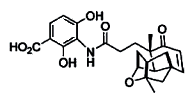Ever wondered whether there might be a way to extract more than the usual information from your chemical data. A query on the sciencebase site wanted to know whether there were a way to convert molecular weight into a formula.
The reverse – calculating molecular weight from a formula, is obviously trivial, just add up the atomic masses of all the elements in the formula. In fact, the likes of ChemDraw, ChemSketch and other chemistry drawing packages have a built in applet to extract the molecular weight from any molecule you can construct or import into them. But, how might one go about converting a molecular weight into a formula?
ChemSketch’s Tony Williams tells me that the visitor was more than likely looking to use monoisotopic mass to derive a molecular formula. In the ChemSketch program: “Use Formulae Generator to generate the possible molecular or fragment ion formulae.”
http://www.nullcdlabs.com/products/spec_lab/exp_spectra/ms/proc_features.html
But, just going back to the ambiguous nature of the query.
Take a molecule with molecular weight “2” as an example. That’s fairly easy. Only one answer possible – dihydrogen, H2. But, what about “28”? It might be carbon monoxide, CO, but then again it could be a compound of hydrogen, boron, and oxygen, HBO, perhaps? Obviously, a bit of chemical nous would lead to a more likely answer, but what if you wanted to automate the process? More to the point, if you had a molecular weight of say, 346, there’s absolutely no way of extracting a unique chemical formula from that. Now, if you know the molecular mass with more precision, two decimal places say then that would narrow the search somewhat, it would almost be like solving sudoku hunting and pecking until the elements fit.
There is another tool that can do the search the Magnus program from Cambridge U’s Jonathan Goodman and colleagues, which is now included in Chemspy with Dr Goodman’s permission under the banner of Molecular Formula Search (you’ll need a java enabled browser to make it work). This tool runs essentially a reverse lookup for high resolution mass spectrometry (HRMS) molecular weights:
Of course, knowing other basic information, such as percent elemental analysis, physical properties, and reactivity, could lead you to the formula quicker still.
(This posting originally appeared on 2006-05-06 but since we’ve now added the tool to ChemSpy felt it was worth another mention, especially as Jonathan offered us some additional insights into reverse engineering HRMS molecular weights)
